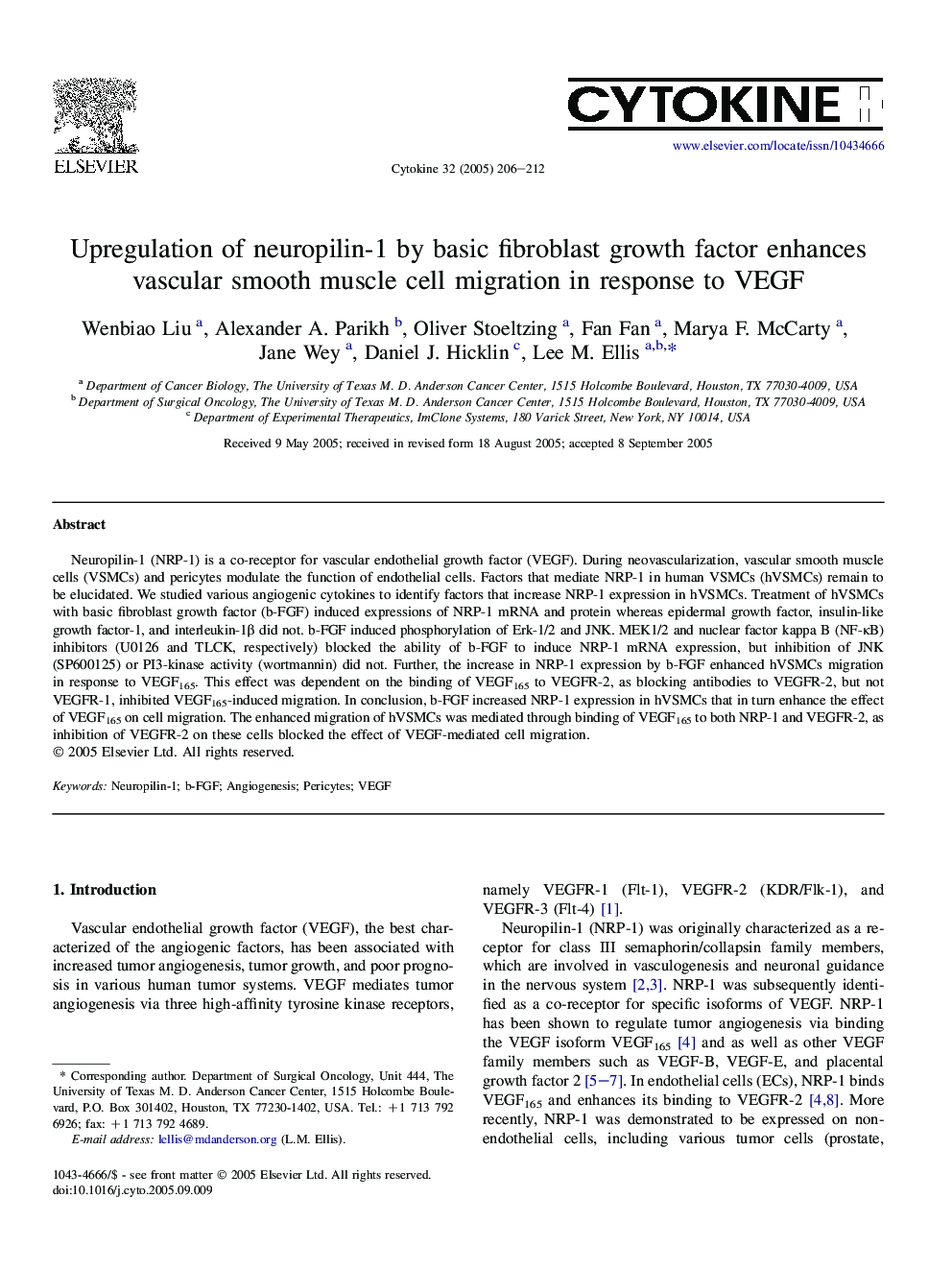| Article ID | Journal | Published Year | Pages | File Type |
|---|---|---|---|---|
| 9110738 | Cytokine | 2005 | 7 Pages |
Abstract
Neuropilin-1 (NRP-1) is a co-receptor for vascular endothelial growth factor (VEGF). During neovascularization, vascular smooth muscle cells (VSMCs) and pericytes modulate the function of endothelial cells. Factors that mediate NRP-1 in human VSMCs (hVSMCs) remain to be elucidated. We studied various angiogenic cytokines to identify factors that increase NRP-1 expression in hVSMCs. Treatment of hVSMCs with basic fibroblast growth factor (b-FGF) induced expressions of NRP-1 mRNA and protein whereas epidermal growth factor, insulin-like growth factor-1, and interleukin-1β did not. b-FGF induced phosphorylation of Erk-1/2 and JNK. MEK1/2 and nuclear factor kappa B (NF-κB) inhibitors (U0126 and TLCK, respectively) blocked the ability of b-FGF to induce NRP-1 mRNA expression, but inhibition of JNK (SP600125) or PI3-kinase activity (wortmannin) did not. Further, the increase in NRP-1 expression by b-FGF enhanced hVSMCs migration in response to VEGF165. This effect was dependent on the binding of VEGF165 to VEGFR-2, as blocking antibodies to VEGFR-2, but not VEGFR-1, inhibited VEGF165-induced migration. In conclusion, b-FGF increased NRP-1 expression in hVSMCs that in turn enhance the effect of VEGF165 on cell migration. The enhanced migration of hVSMCs was mediated through binding of VEGF165 to both NRP-1 and VEGFR-2, as inhibition of VEGFR-2 on these cells blocked the effect of VEGF-mediated cell migration.
Related Topics
Life Sciences
Biochemistry, Genetics and Molecular Biology
Endocrinology
Authors
Wenbiao Liu, Alexander A. Parikh, Oliver Stoeltzing, Fan Fan, Marya F. McCarty, Jane Wey, Daniel J. Hicklin, Lee M. Ellis,
